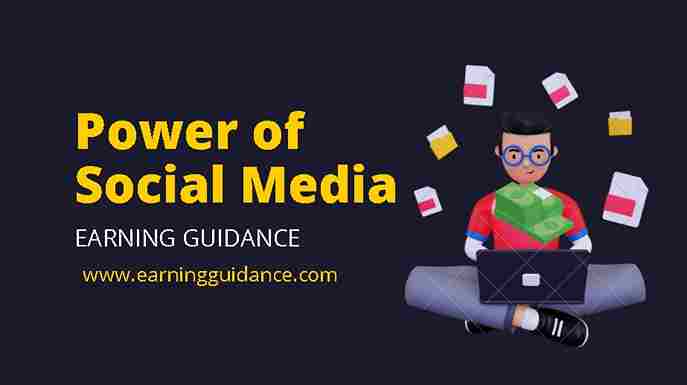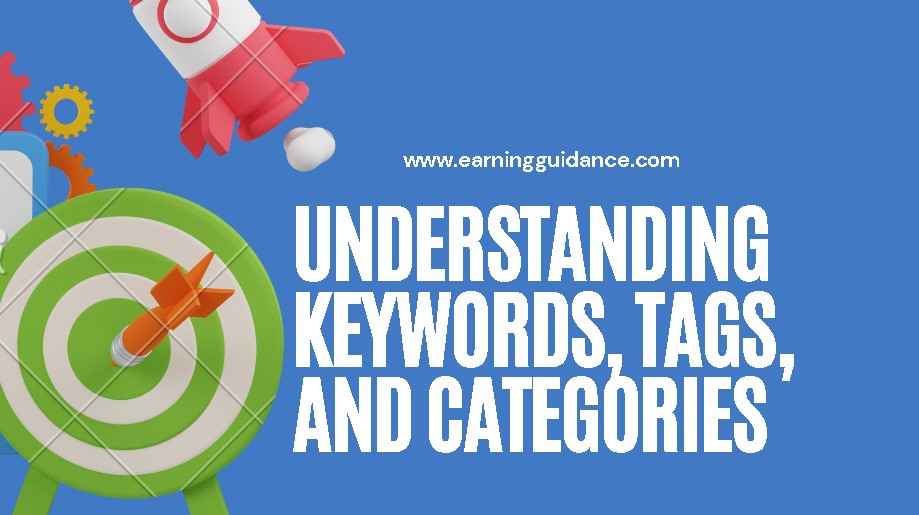Table Of Contents
- 1 The Power of Social Media to Promote Your Blog
- 1.1 Introduction
- 1.2 Understanding the Power of Social Media
- 1.3 Identifying Your Target Audience
- 1.4 Creating Compelling Social Media Content
- 1.5 Choosing the Right Social Media Platforms
- 1.6 Building a Strong Social Media Presence
- 1.7 Promoting Blog Content on Social Media
- 1.8 Harnessing the Power of Visual Content
- 1.9 Engaging with Your Social Media Community
- 1.10 Social Media Advertising and Influencer Partnerships
- 1.11 Measuring Social Media Performance
- 1.12 Frequently Asked Questions
- 1.12.1 How often should I post on social media to promote my blog effectively?
- 1.12.2 What types of content perform best on different social media platforms?
- 1.12.3 Should I focus on organic reach or invest in paid social media advertising?
- 1.12.4 How can I engage with my social media audience and build a community?
- 1.12.5 Are there any specific legal considerations when using social media for blog promotion?
- 1.13 Conclusion
The Power of Social Media to Promote Your Blog
Introduction
Social media has become an integral part of today’s digital landscape, transforming the way we communicate, connect, and consume information. As a blogger, understanding the power of social media and leveraging it effectively can greatly amplify the reach and visibility of your blog. In this article, we will explore how you can use social media as a powerful tool to promote your blog and engage with your audience.
10 Mistakes to Avoid as a New Blogger
Understanding the Power of Social Media
Social media has become an integral part of our daily lives, revolutionizing the way we communicate, share information, and discover new content. As a blogger, harnessing the power of social media can be a game-changer for promoting your blog and reaching a wider audience. In this section, we will explore the significance of social media and its potential impact on your blogging journey.
The Influence of Social Media
Social media platforms have gained immense popularity and influence, with billions of active users worldwide. Understanding the power of social media can help you leverage its potential to promote your blog effectively. Consider the following points:
- Reach and Visibility: Social media platforms provide a vast audience reach, allowing you to connect with users across the globe. By sharing your blog content on social media, you can significantly increase your visibility and attract new readers.
- Networking and Community Building: Social media enables you to build a community around your blog, connecting with like-minded individuals, fellow bloggers, and potential collaborators. It offers a platform for interaction, engagement, and the opportunity to foster meaningful relationships with your audience.
- Content Discovery and Virality: Social media platforms are excellent channels for content discovery. Engaging and shareable blog posts have the potential to go viral, spreading rapidly across social networks and reaching a wider audience beyond your immediate followers.
- Brand Building and Authority: Building a strong presence on social media can establish your brand and enhance your credibility as a blogger. Consistently sharing valuable content, engaging with your audience, and showcasing your expertise can position you as an authority in your niche.
- Traffic Generation: Social media platforms can drive significant traffic to your blog. By strategically promoting your blog posts, you can direct users from social media platforms to your website, increasing your blog’s visibility and attracting potential readers.
Benefits of Leveraging Social Media for Blog Promotion
Now that we understand the influence of social media, let’s explore the specific benefits it offers for promoting your blog:
- Increased Blog Exposure: Social media platforms provide an opportunity to reach a larger audience beyond your immediate network. By consistently sharing your blog content, you can increase its exposure and attract new readers who may not have discovered your blog otherwise.
- Enhanced Engagement and Interaction: Social media allows you to engage directly with your audience, facilitating conversations, receiving feedback, and building relationships. This engagement fosters a sense of community and can lead to loyal readership and increased blog engagement.
- Improved Website Traffic: Social media is an effective channel for driving traffic to your blog. By strategically sharing blog posts, you can entice users to click through to your website, increasing your blog’s traffic and potential for conversions.
- Opportunities for Collaboration: Social media platforms provide opportunities for collaboration with other bloggers, influencers, and brands. Collaborative efforts such as guest posting, cross-promotion, or joint projects can expose your blog to new audiences and expand your reach.
- SEO Benefits: Social media activity can indirectly impact your blog’s search engine optimization (SEO) efforts. By generating social signals (likes, shares, comments) and backlinks from social platforms, you can improve your blog’s online visibility and search engine rankings.
Building a Strong Personal Brand Through Blogging
By understanding the power of social media and leveraging its benefits, you can significantly enhance your blog’s promotion, reach, and engagement. The following sections will delve into specific strategies and best practices for using social media to promote your blog effectively.
Remember, social media is a dynamic landscape, and it’s important to adapt your strategies to the changing trends and preferences of your target audience. Let’s explore the next section on identifying your target audience to tailor your social media efforts for maximum impact.
Identifying Your Target Audience
Identifying your target audience is a crucial step in developing a successful social media strategy to promote your blog. By understanding the demographics, interests, and preferences of your audience, you can tailor your content and approach to effectively reach and engage with them. In this section, we will explore the importance of understanding your target audience’s social media preferences and how to research and analyze them.
Importance of Understanding Your Target Audience’s Social Media Preferences
To effectively promote your blog on social media, it’s essential to know where your target audience spends their time and what platforms they prefer. Consider the following points:
- Platform Relevance: Different social media platforms cater to distinct user demographics and preferences. Understanding which platforms are most relevant to your target audience ensures that you focus your efforts where they are most likely to engage with your content.
- Content Consumption Habits: Different audience segments may have varying preferences for consuming content. Some may prefer visual content, while others may prefer long-form articles or short, concise updates. Knowing these preferences helps you tailor your content strategy to meet their needs and preferences.
- Engagement Patterns: Each social media platform offers unique engagement features such as likes, comments, shares, or direct messages. Understanding how your target audience engages with content on each platform can help you craft your social media posts to encourage interaction and build meaningful relationships.
The Power of Visual Content: Creating Stunning Blog Graphics
Researching Demographics and User Behavior on Different Social Platforms
To identify your target audience’s social media preferences, you need to conduct thorough research and analysis. Here are some methods to gather valuable insights:
- Google Analytics: Utilize Google Analytics to understand your blog’s existing audience. Analyze demographic data, user behavior, and traffic sources to identify which social media platforms drive the most engagement and traffic to your blog.
- Social Media Insights: Most social media platforms provide built-in analytics tools that offer valuable insights into your audience’s demographics, engagement, and content performance. Explore these analytics dashboards to understand your current audience and identify potential opportunities.
- Audience Surveys: Conduct surveys or polls to gather direct feedback from your audience. Ask questions about their preferred social media platforms, content preferences, and how they engage with blogs on social media. This information can guide your social media strategy.
- Competitor Analysis: Analyze the social media presence of your competitors or other successful bloggers in your niche. Observe which platforms they use, the type of content they share, and how they engage with their audience. This analysis can provide insights into the preferences and behavior of your target audience.
Tailoring Your Social Media Strategy Based on Audience Analysis
Once you have gathered insights about your target audience’s social media preferences, it’s time to tailor your social media strategy accordingly. Consider the following strategies:
- Platform Selection: Focus your efforts on the social media platforms that align with your target audience’s preferences. Invest your time and resources into creating compelling content specifically for those platforms.
- Content Customization: Adapt your content format and style to match the preferences of your target audience on each platform. For example, if your audience prefers visual content, prioritize creating eye-catching images or videos. If they prefer informative articles, share in-depth blog posts.
- Posting Schedule: Determine the optimal posting schedule based on your audience’s online behavior. Experiment with different times and days to identify when your audience is most active and likely to engage with your content.
- Engagement Strategy: Craft your social media posts to encourage engagement and conversation. Pose questions, encourage comments, and respond promptly to interactions to build a sense of community and foster relationships with your audience.
By understanding your target audience’s social media preferences and tailoring your strategy accordingly, you can effectively promote your blog and engage with your desired audience. The following section will delve into creating compelling social media content to captivate and resonate with your target audience. But before that, let’s take a moment to discuss the importance of high-quality and engaging content in your social media efforts.
Creating Compelling Social Media Content
Creating compelling social media content is key to capturing the attention of your target audience and promoting your blog effectively. In this section, we will explore the importance of high-quality and engaging content on social media and provide tips to help you create content that resonates with your audience.
Monetizing Your Blog: Proven Methods for Generating Income
Importance of High-Quality and Engaging Social Media Content
- Attract Attention: With the abundance of content on social media, it’s crucial to create eye-catching and compelling posts that stand out in users’ feeds. High-quality content grabs attention and entices users to stop scrolling and engage with your post.
- Drive Traffic to Your Blog: Compelling social media content can pique users’ curiosity and drive them to click through to your blog. By providing snippets or teasers of your blog posts and including a call-to-action to visit your blog, you can generate traffic and increase your blog’s visibility.
- Build Brand Awareness: Consistent and engaging social media content helps build brand awareness and recognition. When users consistently see valuable and captivating content from your brand, it strengthens their perception of your blog and encourages them to become loyal followers.
- Encourage Engagement: Engaging content prompts users to like, comment, share, and interact with your posts. This engagement not only boosts your visibility on social media platforms but also fosters a sense of community around your blog.
To create compelling social media content that resonates with your audience, consider the following tips:
- Know Your Audience: Understand the interests, preferences, and pain points of your target audience. Tailor your content to address their needs and provide value that aligns with their interests.
- Use Visuals: Incorporate visually appealing elements such as images, videos, infographics, or GIFs to make your posts more engaging. Visuals have a higher chance of capturing users’ attention and conveying your message effectively.
- Craft Engaging Captions: Write concise and captivating captions that complement your visuals and entice users to take action. Use a conversational tone, ask questions, or spark curiosity to encourage users to engage with your content.
- Provide Value: Share valuable tips, insights, or solutions to your audience’s problems. Offer actionable advice, industry knowledge, or educational content that enriches their experience and establishes you as a trusted authority.
- Incorporate Storytelling: Tell stories that resonate with your audience. Personal anecdotes, user testimonials, or behind-the-scenes glimpses into your blog can create an emotional connection and foster engagement.
- Use Hashtags: Research relevant hashtags that are popular among your target audience and industry. Incorporate them strategically in your posts to expand your reach and attract users who are interested in your niche.
- Include Call-to-Actions (CTAs): Encourage users to take the desired action, such as clicking a link, leaving a comment, or sharing your content. Clearly communicate what you want them to do and make it easy for them to follow through.
- Experiment and Analyze: Continuously monitor the performance of your social media content and analyze what resonates with your audience. Experiment with different content formats, styles, and topics to identify what generates the most engagement and adjust your strategy accordingly.
Remember, consistency is key when creating compelling social media content. Develop a content calendar and maintain a regular posting schedule to keep your audience engaged and coming back for more.
Next, we will explore how to choose the right social media platforms to effectively promote your blog. But before that, let’s take a moment to understand the strengths and weaknesses of different social media platforms and how they can align with your target audience and blog niche.
Choosing the Right Social Media Platforms
Choosing the right social media platforms is crucial for effectively promoting your blog. Each platform has its strengths, weaknesses, and user demographics. In this section, we will explore popular social media platforms and how to select the ones that align best with your target audience and blog niche.
Overview of Popular Social Media Platforms
- Facebook: With over 2.8 billion monthly active users, Facebook is the largest social media platform. It offers a wide range of demographics, making it suitable for various blog niches. Facebook provides opportunities for organic reach, paid advertising, and community building through groups and pages.
- Instagram: Known for its visual-centric approach, Instagram has more than 1 billion active users. It is particularly popular among younger demographics, focusing on lifestyle, fashion, beauty, travel, and visual arts. Instagram offers engagement features like Stories, Reels, and IGTV, making it ideal for showcasing visually appealing content.
- Twitter: Twitter is a microblogging platform with 330 million monthly active users. It emphasizes real-time updates and concise messaging. Twitter is popular for news, trending topics, and discussions. It can be effective for engaging with an audience interested in current events, industry trends, and timely content.
- LinkedIn: LinkedIn is a professional networking platform with over 740 million members. It caters to a primarily professional audience, making it suitable for blogs related to career development, entrepreneurship, and industry insights. LinkedIn offers opportunities for networking, content sharing, and B2B connections.
- Pinterest: Pinterest is a visual discovery platform with 459 million monthly active users. It focuses on inspiration, DIY projects, recipes, and creative ideas. Pinterest is ideal for blogs related to home decor, fashion, food, crafts, and lifestyle. It offers long-term visibility for content through “pins” and has a predominantly female user base.
- YouTube: As the largest video-sharing platform, YouTube boasts over 2 billion logged-in monthly users. It is ideal for blogs with video content or those aiming to engage through tutorials, reviews, vlogs, or educational content. YouTube allows for monetization, community building, and integration with other platforms.
- TikTok: TikTok has gained immense popularity with its short-form video content. It has over 1 billion monthly active users, primarily younger demographics. TikTok is known for its entertainment value and trend-driven content. It can be effective for blogs focused on entertainment, lifestyle, fashion, or creative niches.
10 SEO Strategies for Boosting Your Blog’s Visibility
Selecting the Platforms that Align with Your Target Audience and Blog Niche
Consider the following factors when selecting social media platforms:
- Demographics: Understand your target audience’s demographics, interests, and preferences. Choose platforms where your audience is actively present.
- Content Type: Identify the type of content you create and whether it aligns with the platform’s format. Visual content works well on platforms like Instagram and Pinterest, while video content is suitable for YouTube and TikTok.
- Engagement Opportunities: Evaluate the engagement features offered by each platform. Consider whether they align with your content strategy and goals. For example, if you prioritize community engagement, Facebook Groups or LinkedIn Groups may be valuable.
- Competitive Analysis: Research your competitors and influencers in your niche. Identify which platforms they use and analyze their engagement levels and success. This can provide insights into where your target audience is active.
- Time and Resources: Assess the time and resources you can dedicate to managing social media platforms effectively. It’s better to excel on a few platforms than spreading yourself too thin across multiple platforms.
Remember, it’s not necessary to be present on every social media platform. Focus on platforms that align with your target audience, blog niche, and content format. This allows you to invest your efforts in creating quality content and engaging with your audience effectively.
Now that you understand how to choose the right social media platforms, let’s move on to building a strong social media presence for your blog.
Building a Strong Social Media Presence
Building a strong social media presence is essential for promoting your blog effectively and engaging with your audience. In this section, we will explore the steps you can take to establish a compelling presence on social media platforms.
Setting up Optimized Social Media Profiles for Your Blog
- Consistent Branding: Use consistent branding elements such as profile picture, cover image, and color scheme across all your social media profiles. This helps in creating brand recognition and building a cohesive identity.
- Keyword Optimization: Incorporate relevant keywords related to your blog niche in your social media profiles. This improves discoverability and helps users find your profiles when searching for specific topics.
- Clear Bio and Description: Craft a clear and concise bio or description that highlights the purpose of your blog and the value you provide to your audience. Use keywords and compelling language to entice visitors to explore your content.
- Contact Information: Provide accurate contact information, including your blog’s website, email address, and other relevant channels where your audience can connect with you.
Growing Your Follower Base and Increasing Engagement
- Consistent Posting: Develop a consistent posting schedule to maintain an active presence on social media. Experiment with different posting frequencies and times to determine what works best for your audience.
- High-Quality Content: Share high-quality and valuable content that resonates with your audience. This includes a mix of blog posts, curated content, visuals, videos, and engaging captions. Use visuals to grab attention and create shareable content.
- Hashtags: Research and use relevant hashtags in your posts to increase visibility and reach a wider audience. Use a mix of popular and niche-specific hashtags to target specific communities and conversations.
- Engage with Your Audience: Respond to comments, messages, and mentions promptly. Show genuine interest in your audience’s thoughts and feedback. Ask questions, encourage discussions, and foster a sense of community.
- Collaborate and Cross-Promote: Collaborate with other bloggers, influencers, or complementary brands in your niche. This can involve guest posting, co-creating content, or cross-promoting each other’s blogs and social media profiles.
Strategies for Building a Community and Fostering Relationships
- Community Engagement: Actively participate in relevant conversations, groups, and communities within your blog niche. Provide value by sharing insights, answering questions, and supporting others.
- User-Generated Content: Encourage your audience to generate content related to your blog, such as testimonials, reviews, or user-submitted photos. Repost and give credit to user-generated content, fostering a sense of belonging and appreciation.
- Live Video and Stories: Utilize live video features and stories on platforms like Facebook, Instagram, and Twitter to provide behind-the-scenes content, tutorials, Q&A sessions, or exclusive updates. This creates a sense of authenticity and real-time interaction.
- Incentives and Giveaways: Run contests, giveaways, or exclusive promotions for your social media followers. This encourages engagement, attracts new followers, and rewards your audience for their loyalty.
Maximizing Social Media Tools and Analytics
- Scheduling and Management Tools: Utilize social media management tools like Hootsuite, Buffer, or Sprout Social to schedule and automate your social media posts. This saves time and allows you to plan ahead.
- Analytics and Insights: Regularly monitor social media analytics to understand the performance of your posts, follower growth, engagement rates, and demographics. Use this data to refine your social media strategy and cater to your audience’s preferences.
- Paid Advertising: Consider utilizing paid advertising options on social media platforms to reach a broader audience, promote specific blog posts or campaigns, and drive traffic to your blog.
By implementing these strategies, you can build a strong social media presence that attracts followers, engages your audience, and promotes your blog effectively. Remember, consistency, quality content, and meaningful interactions are key to establishing a successful social media presence.
Now that you have learned how to build a strong social media presence, let’s move on to the next section: “Promoting Blog Content on Social Media.”
Promoting Blog Content on Social Media
Promoting your blog content on social media is a powerful way to increase visibility, drive traffic, and engage with your audience. In this section, we will explore effective strategies for promoting your blog posts on various social media platforms.
Crafting Compelling Social Media Captions and Headlines
- Hooking the Audience: Start your captions and headlines with attention-grabbing statements or questions that pique the curiosity of your audience.
- Highlighting the Value: Clearly communicate the value and benefits that readers will gain from reading your blog post. Use persuasive language to emphasize the value proposition.
- Including Keywords and Hashtags: Incorporate relevant keywords and hashtags in your captions and headlines to improve discoverability and reach a wider audience.
- Using Call-to-Actions (CTAs): Encourage your audience to take action by including CTAs such as “Read more,” “Learn more,” or “Share your thoughts.” This prompts engagement and increases click-through rates.
Strategically Sharing Blog Posts on Social Platforms
- Timing and Frequency: Identify the optimal times to post on each social media platform to maximize reach and engagement. Experiment with different posting frequencies and analyze the performance of your posts to refine your strategy.
- Visual Appeal: Use eye-catching visuals, such as high-quality images, infographics, or videos, to accompany your blog post links. Visuals increase engagement and make your content more shareable.
- Platform-Specific Optimization: Tailor your blog post promotions to the specific features and requirements of each social media platform. For example:
- Facebook: Write engaging captions, include relevant images or videos, and consider using Facebook groups to share your blog posts with targeted audiences.
- Twitter: Craft concise and compelling tweets with relevant hashtags. Utilize Twitter threads to provide additional context or expand on your blog post topic.
- Instagram: Share visually appealing images or videos related to your blog post. Use captions to provide a brief summary or teaser, and encourage users to visit your blog for more details.
- LinkedIn: Write professional and informative captions, and leverage LinkedIn’s publishing platform to repurpose your blog content as articles. Engage in relevant LinkedIn groups to share your expertise and drive traffic to your blog.
- Cross-Promotion: Promote your blog posts across multiple social media platforms to reach a broader audience. Share teasers, snippets, or quotes from your blog post with a link to the full article on your blog.
- Hashtags: Research and use relevant hashtags in your social media posts to increase discoverability and expand your reach. Use a mix of popular and niche-specific hashtags related to your blog post topic.
- Tagging Influencers and Brands: Mention influencers, brands, or relevant individuals in your posts when appropriate. This can increase the visibility of your content and potentially lead to shares or collaborations.
- Encouraging Shares and Retweets: Prompt your audience to share your blog post by explicitly asking for retweets, shares, or tags. Offer incentives or create shareable content that resonates with your audience.
- Engaging with Comments: Respond to comments, questions, and feedback on your social media posts promptly. Show appreciation for engagement and foster meaningful conversations with your audience.
By implementing these strategies, you can effectively promote your blog content on social media, increase visibility, and drive traffic to your blog. Remember to tailor your approach based on the specific features and audience preferences of each social media platform.
Now that you have learned how to promote your blog on social media, let’s move on to the next section: “Harnessing the Power of Visual Content.”
Harnessing the Power of Visual Content
Visual content is a powerful tool for capturing attention, conveying messages, and engaging your audience on social media. In this section, we will explore the ways you can harness the power of visual content to promote your blog effectively.
Importance of Visual Content on Social Media
- Attention-Grabbing: Visuals, such as images, videos, infographics, and GIFs, are more likely to grab the attention of social media users as they scroll through their feeds.
- Storytelling: Visual content allows you to tell stories and evoke emotions more effectively than plain text. It can help convey your brand’s personality and establish a connection with your audience.
- Increased Engagement: Posts with visual content tend to generate higher engagement rates, including likes, comments, shares, and click-throughs to your blog.
- Shareability: Visuals are highly shareable and can expand the reach of your blog content as users share and reshare your posts.
Utilizing Images
- High-Quality Images: Use visually appealing, high-quality images that are relevant to your blog post content. These can include photographs, illustrations, or graphics.
- Branded Visuals: Create a consistent visual identity by incorporating your brand colors, logo, and typography in your images. This helps to reinforce your brand and increase recognition.
- Quote Graphics: Design eye-catching graphics that feature quotes from your blog posts. Share these graphics on social media, along with a link to the full article.
Incorporating Videos
- Short Promotional Videos: Create short videos that introduce and promote your blog posts. Highlight the key points and provide a teaser to entice viewers to click through to your blog.
- Video Tutorials: If your blog post content lends itself to tutorials or demonstrations, consider creating video content that complements the written article. Share these videos on social media to provide additional value to your audience.
Using Infographics
- Data Visualization: Condense complex information from your blog post into visually appealing infographics. These can effectively communicate statistics, facts, or step-by-step processes.
- Easy-to-Share: Infographics are highly shareable, so design them in a format that makes it easy for users to share on their own social media profiles or websites.
Tools and Techniques for Creating Visual Content
- Graphic Design Tools: Utilize graphic design tools like Canva, Adobe Spark, or Piktochart to create professional-looking visuals, even if you don’t have design experience.
- Video Creation Tools: Explore video editing tools such as Adobe Premiere Pro, iMovie, or Animoto to create engaging videos for social media.
- Stock Images and Videos: Access stock image and video libraries like Unsplash, Pexels, or Pixabay to find high-quality visuals that complement your blog content.
- Animated Graphics: Experiment with tools like Giphy or Lottie to create animated graphics or GIFs that add movement and catch the viewer’s attention.
By incorporating visually appealing and shareable content into your social media strategy, you can effectively promote your blog and drive traffic to your website. Remember to maintain a consistent visual identity and experiment with different types of visual content to find what resonates most with your audience.
Now that you understand the power of visual content, let’s move on to the next section: “Engaging with Your Social Media Community.”
Engaging with Your Social Media Community
Engaging with your social media community is crucial for building relationships, fostering loyalty, and increasing the visibility of your blog. In this section, we’ll explore effective strategies to engage with your audience on social media platforms.
Responding to Comments, Messages, and Mentions
- Timely Responses: Regularly monitor your social media accounts for comments, messages, and mentions. Aim to respond promptly, showing that you value and appreciate your audience’s engagement.
- Authentic Engagement: When responding, be genuine and authentic. Use a friendly tone and personalize your replies to make your audience feel seen and heard.
- Ask Questions: Encourage conversation by posing questions to your audience in your social media posts. Respond to their answers, further engaging them and sparking discussions.
Encouraging User-Generated Content (UGC)
- Contests and Giveaways: Run contests or giveaways that encourage your audience to create UGC related to your blog. This can include photos, videos, or testimonials. Offer incentives to increase participation and reward the best submissions.
- Hashtag Campaigns: Create a unique hashtag for your blog and encourage your audience to use it when sharing their experiences or content related to your blog. Repost or share the best user-generated posts to showcase and appreciate your community.
- Feature User Content: Regularly feature user-generated content on your social media platforms. This not only recognizes and appreciates your audience but also motivates others to create content and engage with your blog.
Leveraging Social Media as a Platform for Two-Way Communication
- Live Q&A Sessions: Conduct live question-and-answer sessions on platforms like Instagram Live, Facebook Live, or Twitter Spaces. This allows your audience to interact with you directly, ask questions, and receive real-time responses.
- Polls and Surveys: Use polls or surveys on platforms like Instagram or Twitter to gather insights and opinions from your audience. This shows that you value their input and encourages participation.
- Responding to Direct Messages: Take the time to respond to direct messages from your audience. Address their queries, offer assistance, or engage in meaningful conversations. This one-on-one interaction can help build stronger connections and loyalty.
Leveraging User-Generated Content
- Reposting and Sharing: Share user-generated content that aligns with your brand and blog’s messaging. Request permission from the content creator and credit them appropriately when reposting. This not only recognizes your audience but also provides valuable social proof for your blog.
- Collaborating with Influencers: Collaborate with influencers or micro-influencers in your niche. Their endorsement and promotion of your blog can significantly increase visibility and engagement. Ensure that their values align with yours and that their audience is relevant to your blog.
- Tagging and Mentions: Tag and mention relevant individuals, brands, or communities in your social media posts. This can spark conversations, build connections, and increase the visibility of your blog among their followers.
By actively engaging with your social media community, you create a sense of belonging, encourage participation, and strengthen the relationship between your blog and your audience. This leads to increased loyalty, organic growth, and ultimately, more visibility for your blog.
Next, let’s explore how to effectively promote your blog content on social media in the section “Promoting Blog Content on Social Media.”
Social Media Advertising and Influencer Partnerships
Social media advertising and influencer partnerships can greatly amplify the reach and impact of your blog promotion efforts. In this section, we’ll explore the benefits of social media advertising and how to leverage influencer partnerships effectively.
Exploring Paid Advertising Options on Social Media
- Ad Platforms: Familiarize yourself with popular social media advertising platforms such as Facebook Ads, Instagram Ads, Twitter Ads, LinkedIn Ads, and Pinterest Ads. Each platform offers unique targeting options and ad formats to suit your goals.
- Targeted Audience Reach: Leverage social media advertising to target specific demographics, interests, behaviors, and locations. This allows you to reach a highly relevant audience who are more likely to be interested in your blog.
- Ad Formats: Explore various ad formats including image ads, video ads, carousel ads, and sponsored posts. Experiment with different formats to determine which ones resonate best with your target audience.
- Budgeting and Optimization: Set a budget for your social media advertising campaigns and monitor their performance closely. Use analytics and optimization tools provided by the ad platforms to refine your targeting, bidding, and ad creative for better results.
Collaborating with Influencers and Leveraging Their Reach
- Identifying Relevant Influencers: Research and identify influencers in your blog’s niche who have a strong following and engagement on social media. Look for influencers who align with your brand values and target audience.
- Building Relationships: Engage with influencers by following them, commenting on their posts, and sharing their content. Build a genuine relationship by providing value and showing interest in their work.
- Partnership Opportunities: Reach out to influencers for collaboration opportunities such as sponsored content, guest posts, social media takeovers, or product reviews. Outline the mutual benefits and value you can provide to ensure a successful partnership.
- Monitoring and Measuring: Track the performance of influencer collaborations by monitoring engagement, reach, and conversions generated through their content. Evaluate the impact of each partnership to inform future collaborations.
Maximizing the Impact of Social Media Advertising and Partnerships
- Consistent Branding: Ensure that your branding is consistent across your social media advertising and influencer partnerships. Maintain a cohesive visual identity and messaging that reflects your blog’s unique value proposition.
- Clear Call-to-Action: Include a clear and compelling call-to-action in your social media ads and influencer collaborations. Encourage users to visit your blog, subscribe to your newsletter, or take any desired action.
- Tracking and Analytics: Utilize tracking links, UTM codes, or affiliate tracking to measure the effectiveness of your social media advertising and influencer partnerships. Monitor the traffic, conversions, and engagement driven by each campaign.
- Continual Optimization: Continuously analyze the performance of your social media advertising campaigns and influencer partnerships. Test different strategies, ad variations, and influencers to optimize your results and maximize your return on investment.
By incorporating social media advertising and influencer partnerships into your blog promotion strategy, you can tap into larger audiences, increase brand visibility, and generate more engagement and conversions.
Next, we’ll move on to the section “Measuring Social Media Performance,” where we’ll explore the importance of tracking metrics and analytics to evaluate the success of your social media efforts.
Measuring Social Media Performance
Measuring the performance of your social media efforts is essential to understand the effectiveness of your strategies, identify areas for improvement, and make data-driven decisions. In this section, we’ll explore key metrics and tools to measure your social media performance.
Tracking Key Metrics and Analytics
- Engagement Metrics: Measure the level of engagement your social media posts receive, including likes, comments, shares, and retweets. These metrics indicate how well your content resonates with your audience.
- Reach and Impressions: Track the number of people who have seen your social media posts (reach) and the number of times your posts have been displayed (impressions). This helps gauge the visibility and exposure of your content.
- Click-through Rate (CTR): Measure the percentage of users who click on the links included in your social media posts. CTR indicates the effectiveness of your call-to-action and the interest generated by your content.
- Conversion Metrics: Track the number of conversions or desired actions taken as a result of your social media efforts. This could include newsletter sign-ups, downloads, purchases, or form submissions.
Evaluating the Success of Social Media Campaigns and Posts
- A/B Testing: Experiment with different variations of your social media posts, such as headlines, visuals, or calls-to-action. Compare the performance of each variation to identify which elements resonate best with your audience.
- Campaign-specific Metrics: For social media campaigns, track specific metrics aligned with your campaign goals. These could include the number of entries, coupon code usage, or event registrations.
- Referral Traffic: Use website analytics tools like Google Analytics to track the amount of traffic driven to your blog from social media platforms. Analyze which social media channels are bringing the most relevant and engaged visitors.
- Social Listening: Monitor social media mentions, hashtags, and conversations related to your blog. Identify trends, sentiment, and feedback to gauge the impact of your social media presence and make improvements.
Using Data to Refine Your Social Media Strategy
- Identify Top-performing Content: Analyze your social media analytics to identify posts that have generated high engagement, reach, or conversions. Determine the common elements or themes that make them successful and incorporate those into future content.
- Optimize Posting Schedule: Analyze the data to determine the best times and days to post on each social media platform. Adjust your posting schedule to maximize visibility and engagement based on your audience’s online behavior.
- Set Realistic Goals: Use the insights gained from tracking metrics to set realistic and measurable goals for your social media performance. This could include increasing engagement rates, driving more referral traffic, or growing your follower base.
- Benchmark and Competitor Analysis: Compare your social media metrics with industry benchmarks and analyze your competitors’ social media performance. This helps identify areas where you can improve and uncover new opportunities.
By regularly monitoring and analyzing social media metrics, you can gain valuable insights into the effectiveness of your strategies. Use these insights to refine your social media approach, optimize your content, and ultimately achieve your blog promotion goals.
Frequently Asked Questions
Posting frequency depends on the platform and your audience’s preferences. Experiment with different posting schedules to find a balance between consistency and not overwhelming your followers.
Each platform has its own content preferences. Visual content, such as images and videos, tend to perform well on platforms like Instagram and Pinterest, while concise and engaging captions work best on platforms like Twitter.
Both organic reach and paid advertising have their benefits. Initially, focus on building an organic following and engagement. As your blog grows, consider allocating a budget for targeted social media advertising to boost visibility.
Respond promptly to comments and messages, ask questions, conduct polls, and share user-generated content. Show genuine interest in your audience’s opinions and foster a sense of community by encouraging conversation.
Ensure compliance with relevant laws and regulations, such as disclosing sponsored content or adhering to copyright and intellectual property rights when using third-party content.
Conclusion
In today’s digital landscape, social media is a powerful tool for promoting your blog, reaching a wider audience, and engaging with your readers. By understanding the significance of social media, crafting compelling content, building a strong presence, and leveraging the right platforms, you can effectively promote your blog and foster meaningful connections with your audience. Embrace the power of social media to grow your blog and establish your brand in the online community.













Таможенное оформление товаров из Китая – ASIANCATALOG
Китайские производители хорошо понимают, что товары в Россию завозятся несколькими способами, применительно официального таможенного оформления и неофициального ввоза, более распространенной как карго. Какая разница между этими двумя методами ввоза и на какие задачи нужно сконцентрировать внимание при экспорте груза из Китая опциями продавца.
Правильное таможенное оформление товаров из Китая – это таможенное оформление которое идёт на основании с таможенным законодательством ЕАЭС и к тому же защищенной законодательством Российской Федерации.
Серое таможенное оформление (карго) носит чрезмерные риски утраты товара, не подкреплено законом и также не имеет правильных документов.
С учетом того, что Российская Федерация придает характерное участие таможенному законодательству ЕАЭС, востребованность скрытого таможенного оформления (карго) уменьшается. Кроме того, в случае если товары из Китая будут доставлены на территорию России без сложностей, собственники встретятся с непростой ситуацией невозможности предстоящей продажи, в числе прочего и реализацией товаров на популярных торговых площадках России. Поэтому мы рекомендуем участникам внешнеторговой деятельности предпочитать официальное таможенное оформление и избегать серое таможенное оформление.
К тому же, при экспедировании товаров из Китая в основные города и рынки России и СНГ нужно сконцентрировать внимание на вопросы логистики.
Специалисты по таможенному оформлению ASIANCATALOG оказывают поддержку малому и среднему бизнесу России и СНГ при доставке товаров из Китая, выступая в качестве участника внешнеэкономической деятельности оказывают таможенное оформление товаров из Китая c выдачей полного пакета коммерческих документов для последующей торговли на внутреннем рынке и реализуют услуги по таможенному оформлению товаров из Китая на основании договора услуги таможенного оформления, при доставке товаров из Китая под оплаченный внешнеторговый контракт клиента.
Таможенное оформление китайских товаров – это коммерческий вид деятельности компании, предоставляющий достоверность и скорейшее проведение таможенного оформления с оплатой таможенных пошлин. Мы оказываем услуги таможенного оформления товаров из Китая юр. лицам а также физ. лицам, являющимися резидентами России и СНГ.